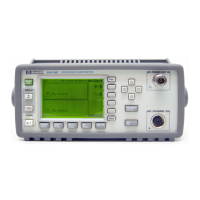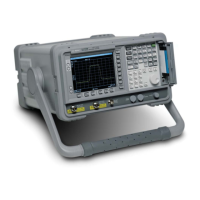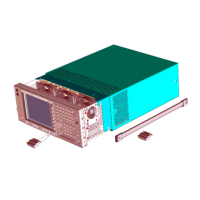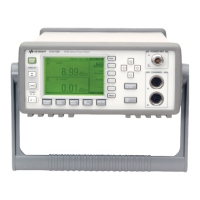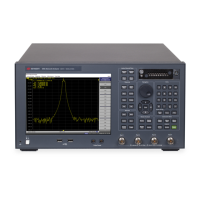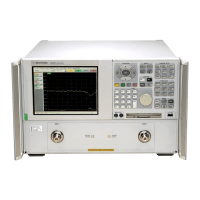14 Chapter 1
Introduction and Measurement Theory
Cable Impedance and Structural Return Loss Measurement Theory
Cable Impedance and Structural Return Loss
Measurement Theory
The SRL feature is designed to measure cable impedance and structural return loss.
Cable impedance is the ratio of voltage to current of a signal traveling in one
direction down the cable. Structural return loss is the ratio of incident signal to
reflected signal in a cable, referenced to the cable's impedance.
The network analyzer uses a synthesized RF signal source to produce an incident
signal as a stimulus. A reflection measurement is made and then used to compute the
cable impedance. The structural return loss measurement is displayed referenced to
the measured cable impedance.
For CATV cable, the cable is measured from 5 MHz to 1000 MHz at narrow
frequency resolutions down to 125 kHz. The analyzer, with a furnished VBA utility
program, will automatically scan the cable, then report the worst-case responses.
Cable Impedance
The analyzer automatically computes the cable impedance (Z). However, if you
wish to turn off this “auto Z” function and input your own value of impedance, you
can. See
“Connector Model for Short Cables” on page 67.
In coaxial cable, the value of the impedance will depend upon the ratio of the inner
and outer conductor diameters, and the dielectric constant of the material between
the inner and outer conductors. The cable impedance will also be affected by
changes in conductivity. These changes are a natural consequence of RF currents
that flow near the surface of a conductor. This effect is known as the “skin effect.”
Also, the construction of the cable can change along the length of the cable, with
differences in conductor thickness, dielectric material and outer conductor diameter
changing due to limitations in manufacturing. Thus the cable impedance may vary
along the length of the cable.
The extent to which manufacturing imperfections degrade cable performance is
characterized by a specification called structural return loss (SRL). SRL is the ratio
of incident signal to reflected signal in a cable. This definition implies a known
incident and reflected signal. In practice, the SRL is loosely defined as the reflection
coefficient of a cable referenced to the cable's impedance. The reflection seen at the
input of a cable, which contributes to SRL, is the sum of all the tiny reflections
along the length of the cable. In terms of cable impedance, the SRL can be defined
mathematically as:
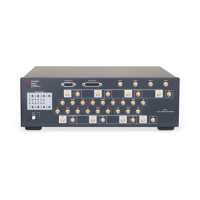
